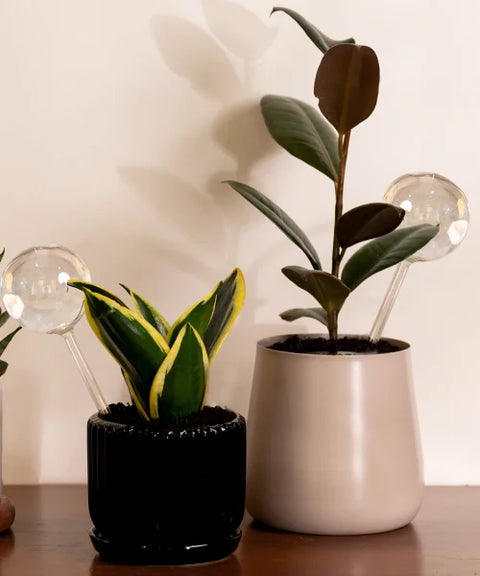Care guide
Caladiums thrive in bright, indirect light or dappled shade. Avoid exposing them to direct sunlight, as it can scorch their leaves. They are well-suited for areas with filtered sunlight, such as under tall trees or on shaded patios.
Caladiums prefer warm temperatures between 65°F and 85°F (18°C and 29°C). They are sensitive to cold temperatures and should be protected from drafts or temperatures below 55°F (13°C). If growing them outdoors, wait until the soil has warmed up before planting.
Caladiums require regular watering to keep the soil consistently moist but not waterlogged. Water them when the top inch (2.5 cm) of soil feels dry. Avoid allowing the soil to dry out completely or becoming soggy. Maintaining proper soil moisture is key to preventing leaf wilt and promoting healthy growth.
Caladiums appreciate higher humidity levels. If the air in your home or location is dry, increase humidity by misting the leaves with water or placing the plant on a tray filled with pebbles and water (make sure the pot is above the water level). Grouping plants together can also help create a more humid microclimate.
Use a well-draining, peat-based potting mix or a mixture of peat moss, perlite, and vermiculite. Caladiums prefer slightly acidic soil with a pH around 5.5 to 6.5. Good drainage is essential to prevent waterlogged roots.
Caladiums benefit from regular feeding during the growing season (spring and summer). Use a balanced, water-soluble fertilizer or a slow-release granular fertilizer formulated for foliage plants. Follow the package instructions for dilution ratios and frequency. Reduce or stop fertilization during the dormant period in winter.
Plant caladiums in containers with drainage holes to ensure excess water can escape. Choose a pot that allows enough room for the tubers to grow. When planting, place the tuber with the bumpy side facing up, and cover it with soil, leaving the top portion exposed.
Caladiums do not require extensive pruning. However, you can remove any yellow or dead leaves by cutting them off at the base. This helps maintain the plant's appearance and allows it to focus its energy on producing new leaves.









 Apply Discount at Checkout
Apply Discount at Checkout 

























































































